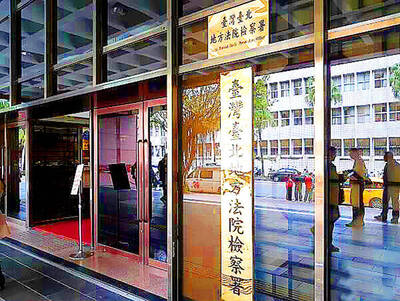A military agreement with the Philippines and easing an arms embargo against Vietnam show that US President Barack Obama’s administration wants deeper security ties with Asia, even as turmoil in the Middle East has undermined its hope of making Asia the heart of its foreign policy.
The “pivot” was intended to be Obama’s signature push in foreign affairs. As the US disengaged from wars in Iraq and Afghanistan, it would devote more attention to the Asia-Pacific region and US economic interests there.
However, it has not turned out as planned. Washington is grappling with the fallout of the Arab Spring, a growing rivalry with Russia and the rise of the Islamic State.
Against this chaotic backdrop, the growing tensions in the South and East China seas and US efforts to counter the rise of an increasingly assertive China appear peripheral concerns — the pivot gets few people in Washington excited these days.
Obama did not even mention it in a sweeping foreign policy speech in May and negotiations on the Trans-Pacific Partnership — the main economic prong in the pivot — have been mired by differences between the US and Japan over agriculture and auto market access, as well as by opposition to the pact among many of Obama’s fellow Democrats.
Yet the administration is still chipping away at its grand plan for a rebalance to Asia that began within months of Obama taking office in 2009, when the US signed a cooperation treaty with ASEAN.
The US has since ended its decades-long isolation of Myanmar, in response to democratic reforms there. It has taken a more strident diplomatic stance against Chinese aggression in the South China Sea and some concrete steps to shore up its allies’ ability to respond. In April, Washington signed a 10-year agreement to allow thousands of US troops to be temporarily based in the Philippines.
Like the Philippines, Vietnam has been engaged in standoffs with China over disputed reefs and islands. Tensions spiked from May to July after China deployed a deep-sea oil rig near the Paracel Islands (Xisha Islands, 西沙群島), which Taiwan also claims.
Chris Brose, who is Republican Senator John McCain’s foreign policy adviser, said that the US still has to convince Asia that the rhetoric of the pivot can become reality.
“The question is not whether America is doing something. Clearly America is,” Brose told a Washington think tank on Friday. “The question is whether what America is doing adds up to a set of actions that’s fundamentally impacting China’s calculus.”

INVESTIGATION: The case is the latest instance of a DPP figure being implicated in an espionage network accused of allegedly leaking information to Chinese intelligence Democratic Progressive Party (DPP) member Ho Jen-chieh (何仁傑) was detained and held incommunicado yesterday on suspicion of spying for China during his tenure as assistant to then-minister of foreign affairs Joseph Wu (吳釗燮). The Taipei District Prosecutors’ Office said Ho was implicated during its investigation into alleged spying activities by former Presidential Office consultant Wu Shang-yu (吳尚雨). Prosecutors said there is reason to believe Ho breached the National Security Act (國家安全法) by leaking classified Ministry of Foreign Affairs information to Chinese intelligence. Following interrogation, prosecutors petitioned the Taipei District Court to detain Ho, citing concerns over potential collusion or tampering of evidence. The

‘FORM OF PROTEST’: The German Institute Taipei said it was ‘shocked’ to see Nazi symbolism used in connection with political aims as it condemned the incident Sung Chien-liang (宋建樑), who led efforts to recall Democratic Progressive Party (DPP) Legislator Lee Kun-cheng (李坤城), was released on bail of NT$80,000 yesterday amid an outcry over a Nazi armband he wore to questioning the night before. Sung arrived at the New Taipei City District Prosecutors’ Office for questioning in a recall petition forgery case on Tuesday night wearing a red armband bearing a swastika, carrying a copy of Adolf Hitler’s Mein Kampf and giving a Nazi salute. Sung left the building at 1:15am without the armband and apparently covering the book with a coat. This is a serious international scandal and Chinese

Seventy percent of middle and elementary schools now conduct English classes entirely in English, the Ministry of Education said, as it encourages schools nationwide to adopt this practice Minister of Education (MOE) Cheng Ying-yao (鄭英耀) is scheduled to present a report on the government’s bilingual education policy to the Legislative Yuan’s Education and Culture Committee today. The report would outline strategies aimed at expanding access to education, reducing regional disparities and improving talent cultivation. Implementation of bilingual education policies has varied across local governments, occasionally drawing public criticism. For example, some schools have required teachers of non-English subjects to pass English proficiency

TRADE: The premier pledged safeguards on ‘Made in Taiwan’ labeling, anti-dumping measures and stricter export controls to strengthen its position in trade talks Products labeled “made in Taiwan” must be genuinely made in Taiwan, Premier Cho Jung-tai (卓榮泰) said yesterday, vowing to enforce strict safeguards against “origin laundering” and initiate anti-dumping investigations to prevent China dumping its products in Taiwan. Cho made the remarks in a discussion session with representatives from industries in Kaohsiung. In response to the US government’s recent announcement of “reciprocal” tariffs on its trading partners, President William Lai (賴清德) and Cho last week began a series of consultations with industry leaders nationwide to gather feedback and address concerns. Taiwanese and US officials held a videoconference on Friday evening to discuss the